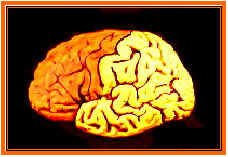 Estudio
de Lenguas Extranjeras y el Cerebro Humano
Estudio
de Lenguas Extranjeras y el Cerebro Humano
BIBLIOGRAFIA
APRENDIZAJE TEMPRANO DEL IDIOMA
Asher,
J. & Garcia, R. (1984). “The optimal age to learn a foreign language.” Modern
Language Journal, 53, 334-341.
Baker,
C. (1993). “Canadian immersion
classrooms.” Foundations of bilingual education and bilingualism, ch.
15, 227-235. Clevedon, GB: Multilingual
Matters.
Begley,
S. (1996, February 19). “Your child’s brain.” Newsweek, 55-59.
Celestino,
W. J. (1993, December). “Total physical response: Commands, not control.” Hispania,
76 ( 4), 902-903.
Chugani,
H. T. (1996). “Neuroimaging of developmental non-linearity and developmental
pathologies”. Developmental Neuroimaging: Mapping the development of brain
and behavior. In R. W. Thatcher, G. R. Lyon, J. Rumsey and N. Krasnegor
(Eds.). Academic Press, San Diego.
Clyne,
M. (1983, April). “An immersion program in Australia.” Babel: Journal of
the Australian Federation of Modern Language Teachers; 18 (1), 6-15.
(Current Index to Journals in Education No. EJ 284 118).
Genesee,
F. (1996, Winter). “Integrating language and content: Lessons from
immersion.” Learning Languages, 15-16.
Hart,
L. A. (1983). Human brain and human learning, 168-169. New York: Longman.
Krashen,
S. D. (1976). “The critical period of language acquisition and its possible
bases.” In: Aronson, D.R., &
Rieber, R.W. (Eds.), Developmental Psycholinguistics and Communication
Disorders. New York.
Krashen,
S. D. & Terrell, T. D. (1983). The natural approach: Language acquisition
in the classroom, 16-61. Oxford: Pergamon Press.
Kuhl, P. K. (1994). “Learning and representation in speech and
language.” Current Opinion in Neurobiology, 4, 812-822.
“Language
learning and the developing brain.” (1996, Winter). Learning Languages, 1
(2), 17.
Lemke,
J. L. (1990). Talking science: Language, learning and values, 139.
Norwood, NJ: Ablex.
Nash,
J. M. (1997, February 3). “Fertile Minds.” Time, 49-56.